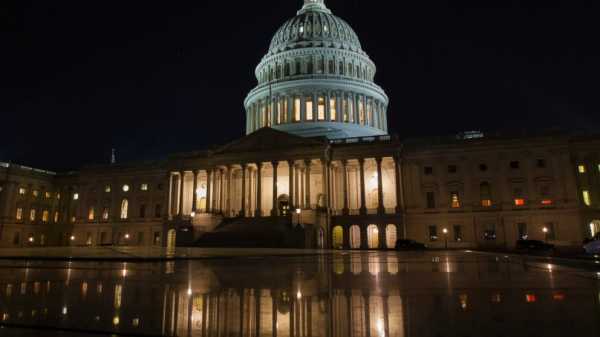The most liquid deposits could begin to leak out, and the benefits of free liquidity would flow to non-bank competitors. Large banks may fear that the growing importance of stablecoins will disrupt their business. But this isn't the main reason why bankers overseas are starting to discuss issuing their own cryptocurrencies.


For years, the term “stablecoin” has been associated primarily with the intersection of decentralized finance in the crypto world and official currency. Stablecoins primarily served as on-ramp and off-ramp platforms, i.e., intermediate stages in the introduction and withdrawal of fiat money into the crypto-investment space.
By exchanging the dollar for, say, USDT, an investor already had a cryptoasset with all its advantages (speed of transfer, ease of conversion on centralized and decentralized exchanges), but one that was not yet susceptible to significant value fluctuations. Therefore, it was an ideal entry, exit, and stopping point for subsequent transactions.
Advertisement See also: Stock market on trial, prizes on the line. Play for cash, cars, and fame!
Stablecoins came in several varieties, from those “algorithmically” maintaining a stable value relationship to a reference point to those issued based on reserves, such as fiat currency. Each form had specific problems, ranging from the risk of deviations from the target value (depegging) to the opacity of reserves.
For the world of official finance, this was an experiment watched with interest, until it began to take on a noticeable scale. In 2024, when stablecoins had already had a 10-year history, Visa estimated that settlements (solely related to payments, not cryptoasset transactions) conducted this way would add up to $2.5 trillion annually. It's worth noting that the vast majority of issued tokens are based on the US dollar. The world of stablecoins is therefore strongly linked to the USD.
Fintechs have taken the first steps, will banks take the second?
A symbolic moment that could be considered a sign of stablecoins' acceptance as a useful tool not only in the crypto world was the issuance of PYUSD tokens in 2023. Although this move was spearheaded by e-commerce payments giant PayPal , the actual issuer was Paxos Trust. PayPal decided to entrust reserve management and other technical roles to a specialist, and by then the stablecoin market had already developed its own ecosystem, with players capable of taking on such roles emerging.
PayPal hasn't fully realized the potential of stablecoins, partly due to legal constraints. For example, the promising scenario of instant, global transfers at negligible cost remains a pipe dream. As a Polish user of the platform, I didn't have access to PYUSD and couldn't settle using the tokens.
The beginning of the second phase of the “stablecoins and official finance” romance can be seen in a series of recent announcements from major American banks . The most recent of these comes from meetings with analysts during their half-year results presentations.
Bank of America CEO Brian Moynihan indicated that his institution intends to issue stablecoins when “the time is right.” Monitoring customer demand will be key. Morgan Stanley CEO echoed this sentiment, though he used more cautious language, cautioning that it remains unclear whether a stablecoin will be an appropriate response to market needs.
JPMorgan CEO Jamie Dimon declared that the bank intends not only to engage in stablecoin-related activities, but also to pursue a two-pronged approach. Not only will a deposit token be introduced to the market, but also a “classic” stablecoin issued by the bank. Dimon said that maintaining awareness of competitors' activities (especially fintechs) requires a presence in the same space. However, he was skeptical about the role of tokens in retail payments.
Citigroup CEO Jane Fraser confirmed that the bank will also pursue a two-pronged strategy based on the issuance of deposit tokens and a stablecoin.
Why do banks want to get on this train?
Mentions of American banks' plans may evoke associations with the pioneering days of mobile payments. Bankers were aware of the impending revolution, but at the same time, they lacked a clear plan for how to navigate the new circumstances. Across the Atlantic, Apple and the card organizations rescued them from this “strategic uncertainty,” but at the price of capturing a portion of the revenue from payment processing.
This time, the battleground likely won't be retail payments . Although banks face the risk that stablecoins will become a tool for small settlements, displacing P2P payments and payment cards, this scenario seems unlikely, especially in local markets. It's worth noting that such a development would potentially have more serious consequences, such as the “sucking” from banks' balance sheets of deposits from customers who prefer to hold a token in an e-wallet instead of digits in a bank account. This is one reason why US regulations prohibit the charging of interest (and other benefits) to holders of stablecoins.
Analysts point to stablecoins' greatest promise in the area of business-to-business settlements . The current transaction settlement system, based on correspondent banking, is inadequate for the demands of the digital world. Anti-money laundering requirements have further hampered its performance, leading to smaller institutions withdrawing from the market. As a result, the number of interbank connections has decreased, and transfers are slowing down.
A stablecoin issued by could accelerate global settlements, primarily among the largest capital groups using the same bank's services. Similar benefits could later be realized by other groups of corporate clients if the “bank stablecoin vs. cashless money” exchange were sufficiently smooth. However, the most beneficial outcome would be interoperability between various types of bank tokens, creating a platform involving hundreds of institutions.
In this context, it's worth keeping an eye on what card organizations and SWIFT are doing . In recent weeks , Mastercard has discussed its vision for its place in the stablecoin world . The company sees itself as a “bridge” that facilitates the issuance, distribution, and redemption of stablecoins for its customers and network partners through card issuers on the platform. “We start by connecting stablecoins to our network, just like any other currency, enabling consumers and businesses to use them to purchase goods and services or transfer money,” a company representative said at a meeting with analysts. SWIFT, for example, could see its place similarly, but on a more wholesale scale.






